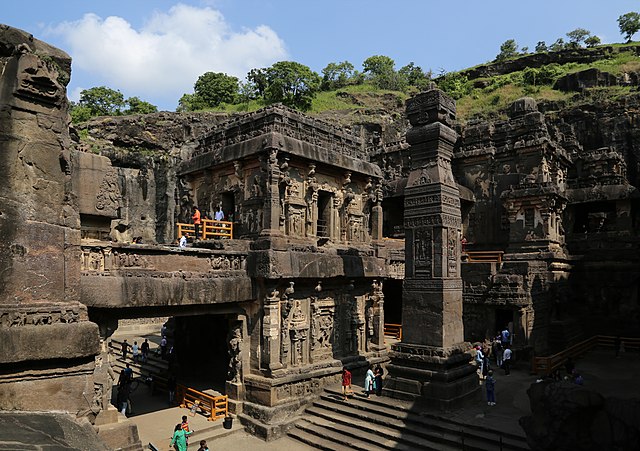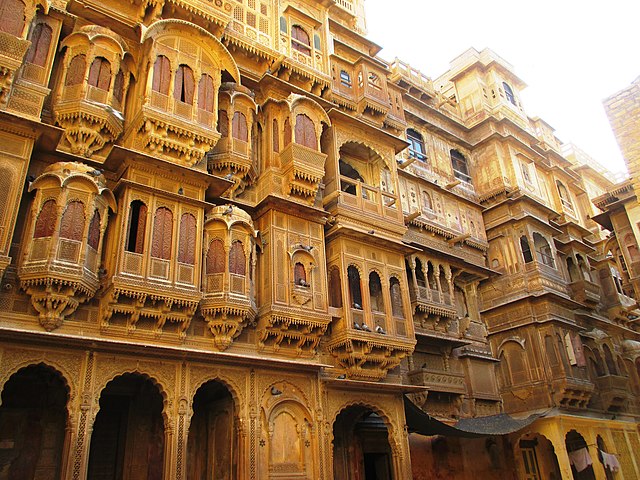Architecture of Rajasthan
The architecture of the Indian state of Rajasthan has usually been a regional variant of the style of Indian architecture prevailing in north India at the time. Rajasthan is especially notable for the forts and palaces of the many Rajput rulers, which are popular tourist attractions.
Jaisalmer Fort, originally including the whole city, dominating the more recent city sections below.
One of the Sahasra Bahu Temples built during the 10th century CE.
Screen of the Adhai Din Ka Jhonpra mosque in Ajmer
City Palace at Jaipur was designed by Vidyadhar Bhattarcharya and built between 1729 and 1732. The architecture of the palace shows clear Mughal influences on its Rajput Architecture.
Indian architecture is rooted in the history, culture, and religion of India. Among several architectural styles and traditions, the best-known include the many varieties of Hindu temple architecture and Indo-Islamic architecture, especially Rajput architecture, Mughal architecture, South Indian architecture, and Indo-Saracenic architecture. Early Indian architecture was made from wood, which did not survive due to rotting and instability in the structures. Instead, the earliest existing architecture are made with Indian rock-cut architecture, including many Buddhist, Hindu, and Jain temples.
Kailash Temple, Ellora Caves is an example of Indian rock-cut architecture.
Tamil architecture of Meenakshi Temple
Patwon ki Haveli, Jaisalmer. Rows of sandstone haveli in Rajasthan.
The Taj Mahal, Agra is the epitome of Mughal architecture.








